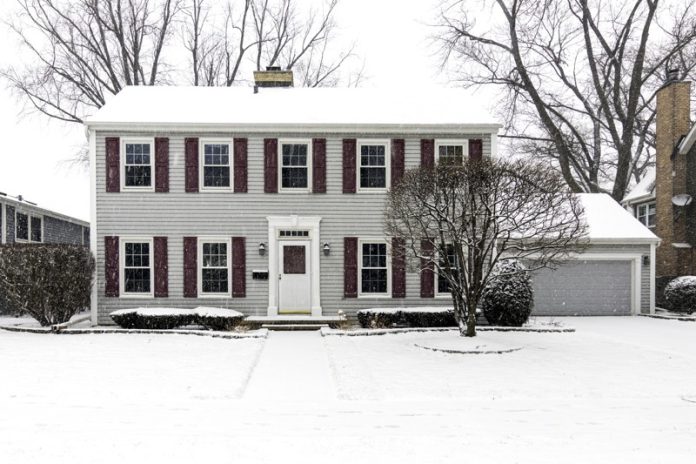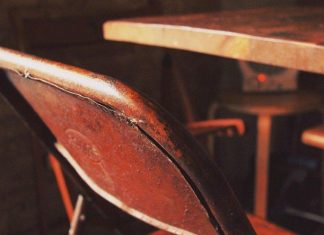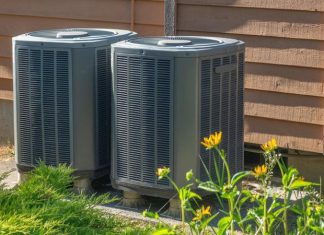With the winter season already upon us, professional house painters are confronted by a unique set of challenges that wield considerable influence over their work. One of the most notable of these challenges revolves around the substantial impact that cold temperatures can exert on paint. As mercury drops, the behaviour of paint, especially concerning its drying and curing times, takes on heightened significance. Therefore, it becomes imperative for house painters to possess a comprehensive understanding of these effects to ensure the achievement of a flawless and long-lasting finish. Within the confines of this blog post, we will embark on a journey to explore the multifaceted ways in which winter’s cold grip shapes the course of paint while examining its direct implications for diligent house painters. Furthermore, we will provide a wealth of invaluable tips and insights to help everyone successfully navigate the intricate challenges presented by the winter season.
Understanding the Impact of Low Temperatures on Paint
Slower Drying Times
One of the most notable effects of cold weather on paint is slower drying times. When the temperature drops, the solvents in the paint take longer to evaporate, causing the paint to remain wet for an extended period. This can lead to several issues for house painters, such as an increased risk of dust and debris sticking to the wet paint surface. Additionally, the prolonged drying time can hinder productivity and cause delays in completing projects.
House painters should use paints specifically formulated for cold weather applications to counter this. These paints contain additives that help accelerate drying times in lower temperatures. Using a low-temperature paint can significantly improve efficiency and ensure a smooth finish even during the winter months.
Reduced Curing Speed
Curing is the process by which paint chemically bonds and hardens over time. In cold weather, curing times can be significantly delayed, leading to a less durable and less resilient finish. The slow curing process can also make the paint more susceptible to damage, such as chipping and cracking, particularly in high-traffic areas. To address this issue, house painters should carefully consider the manufacturer’s recommendations for optimal temperature ranges during the curing process. In some cases, it may be necessary to use additional curing agents or apply a second coat of paint to ensure adequate protection during the winter season.
Poor Adhesion
Low temperatures can also affect the adhesion of paint to the surface. Cold weather can cause the paint to contract, making it less likely to bond effectively with the underlying substrate. This can lead to issues such as peeling, flaking, and blistering, which can compromise the appearance and longevity of the paint job. House painters should properly prepare the surface by cleaning and priming it before applying paint to enhance adhesion in cold weather. High-quality primers and adhesion promoters can help ensure the paint adheres securely, even in suboptimal temperature conditions.
Tips for House Painters Working in Winter
Check the Weather Forecast
Before starting a painting project in the winter, it’s essential to monitor the weather forecast closely. Try to schedule outdoor painting jobs during periods of milder temperatures and avoid days with freezing temperatures or heavy precipitation. Planning ahead can help minimize the negative effects of cold weather on paint.
Store Paint Properly
House painters should store paint in a temperature-controlled environment to prevent it from freezing or becoming too cold. Extreme temperature fluctuations can degrade the quality of the paint, leading to problems during application and drying. Always store paint in a dry, insulated space to maintain its integrity.
Use Heaters and Insulation
When working on interior projects during the winter, consider using portable heaters to maintain a comfortable working temperature. Proper insulation in the workspace can help speed up the drying and curing process by providing a more stable and warmer environment for the paint.
Warm Up Paint Before Application
Cold paint can be challenging to work with, as it may not flow smoothly or cover evenly. To combat this issue, house painters can warm up the paint before use by placing it in a warm room or using a paint warmer. This can help improve the paint’s consistency and ensure a more uniform application.
Follow Manufacturer Recommendations
Always adhere to the manufacturer’s recommendations for your specific paint product. These guidelines will provide valuable information about the optimal temperature range for application, drying, and curing. Deviating from these recommendations will likely result in subpar results.
Conclusion
Winter bestows upon house painters a distinctive set of challenges, where the frigid temperatures profoundly influence the behaviour of the paints they employ. This manifests as the extended drying periods, a decelerated curing process, and the perilous threat of poor adhesion, all conspiring to jeopardize the calibre and longevity of every brush stroke. However, armed with a profound comprehension of these nuances and the strategic guidance provided above, house painters can confidently navigate the icy waters of winter, emerging with results that exude professionalism and excellence. As the winter season unfolds its frosty embrace, make it your mission to prioritize the deployment of cold-weather paint products and adhere meticulously to preparation techniques. In doing so, you’ll ensure the creation of visually captivating masterpieces and enduring works of art that stand the test of time.















